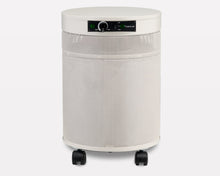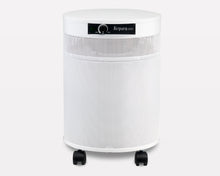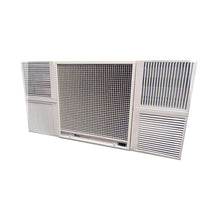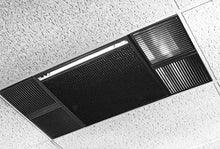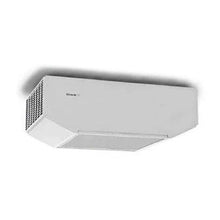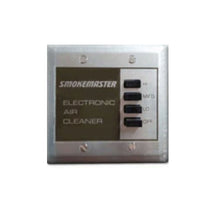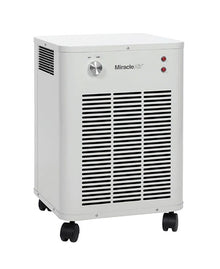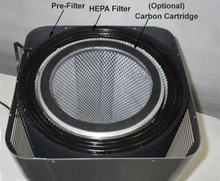The Pipe Smoker's Guide to Clean Air: Choosing the Right Purifier for Your Study
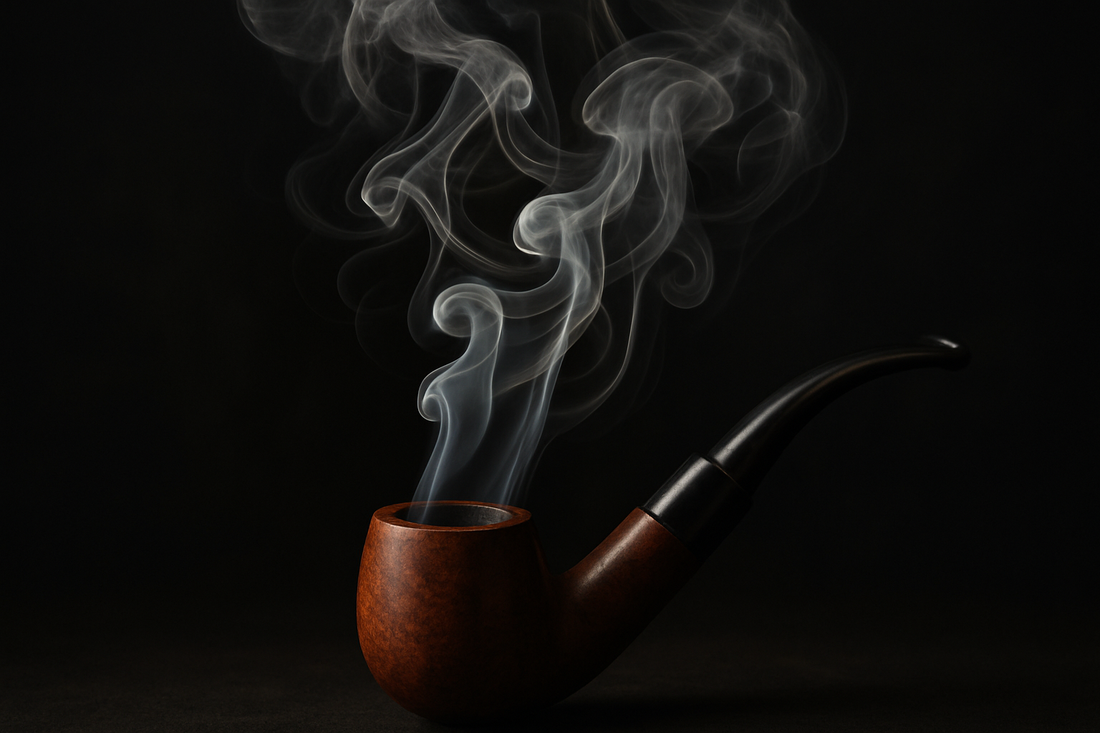
By the Experts at Commercial Air Purifiers | Published: October 15, 2025
For the pipe enthusiast, the experience is a cherished ritual. It’s the careful selection of a prized briar, the thoughtful packing of a favorite aromatic blend, and the unhurried moment of peace that follows the first puff. This deliberate act of relaxation is often enjoyed in a favorite space—a comfortable study, a quiet den, or a dedicated workshop. Yet, the very element that defines the experience, the rich and fragrant smoke, is also what can compromise that sanctuary, leaving behind a stubborn film and a pervasive odor that clings to books, furniture, and memories.
If you’re seeking a way to preserve the integrity of your ritual without sacrificing the air quality of your home, you've come to the right place. This guide is designed to move beyond the myths and ineffective shortcuts. We will explore the actual science behind pipe tobacco smoke and provide a clear, no-nonsense framework for selecting an air purifier powerful enough to eliminate it completely. It's time to create a space where you can enjoy your passion freely, knowing the air remains fresh and clean long after the last ember has faded.
The Unseen Challenge of Pipe Smoke
There’s a common misconception that pipe smoke, with its often sweet and pleasant aroma, is somehow gentler or less impactful than other forms of tobacco smoke. While the experience is certainly different, the fundamental science of combustion tells a different story. The smoke produced by burning pipe tobacco is a complex aerosol containing a potent mix of harmful pollutants that attack your indoor air in three distinct ways.
First is the Particulate Matter (PM), the fine, solid particles of ash and soot that are visible as smoke. The most hazardous of these are the microscopic PM2.5 particles, which are small enough to be inhaled deep into the lungs. According to the National Cancer Institute, pipe smoke contains many of the same carcinogens and toxic substances found in cigarette smoke. These particles are not only a health concern but also create the dusty film that settles on all your surfaces.
Next are the Volatile Organic Compounds (VOCs). These are the gaseous chemicals that are invisible to the eye but are primarily responsible for the distinct and lasting smell of pipe tobacco. In aromatic blends, these VOCs are what produce the notes of cherry, vanilla, or whiskey. While pleasant at first, they are notoriously difficult to remove from the air. These gases readily penetrate porous materials like upholstery, carpets, and even the pages of books, leading to a persistent, stale odor.
Finally, this combination of particles and gases creates thirdhand smoke. This is the toxic residue that remains on surfaces long after the air has seemingly cleared. These chemicals can off-gas back into the room over time or react with other elements in the air to form new pollutants, creating a lingering health risk and a stubborn smell that is difficult to trace. An open window might offer temporary relief, but it’s no match for this complex chemical footprint.
Beyond Dilution: The Core Technologies for True Smoke Elimination
To effectively combat the multifaceted nature of pipe smoke, you need a solution that does more than just move air around. You need a system that actively removes both the solid particles and the gaseous pollutants from your environment. This requires a targeted, two-stage filtration process that addresses each component of the smoke directly.
The Limitations of Simple Ventilation
The first instinct for many is to simply open a window or turn on a ceiling fan. This strategy, known as ventilation, relies on dilution—mixing the smoky air with fresh air to reduce its concentration. While this can help clear out a thick cloud of smoke quickly, it is a fundamentally incomplete solution. Ventilation does not eliminate pollutants; it merely spreads them out.
The microscopic PM2.5 particles are so light that they can remain suspended in the air for hours, and the gaseous VOCs will have already begun to adsorb into your room's surfaces. An open window might make the room feel fresher temporarily, but it does little to remove the actual source of the problem. For anyone sensitive to the smell or the pollutants, or for preventing the odor from spreading to the rest of the house, dilution is simply not enough.
The Two-Stage Filtration Process Your Room Needs
A true air purification strategy involves pulling the entire volume of air in your room through a system designed to capture and neutralize contaminants. For the specific challenge of pipe tobacco smoke, two filtration technologies are absolutely essential, and they must work in concert.
First, a High-Efficiency Particulate Air (HEPA) filter is your frontline defense against the solid components of smoke. As defined by U.S. government standards, a true HEPA filter is certified to trap 99.97% of airborne particles down to a size of 0.3 microns. This medical-grade filtration is incredibly effective at capturing the PM2.5, soot, and fine ash from pipe smoke, literally scrubbing the visible and most irritating particles from the air.
Second, and most critical for odor control, is a deep bed of activated carbon. Carbon works through a process called adsorption, where the molecules of gases and VOCs chemically bond to its surface. The power of activated carbon lies in its immense internal surface area; a single pound of it can have a surface area equivalent to over 100 acres. This vast capacity acts as a powerful sponge for the aromatic compounds and harmful gases in pipe smoke. The key here is quantity. A filter with only a thin coating of carbon dust will become saturated and useless almost immediately. A robust system designed for smoke needs a filter containing many pounds of high-quality activated carbon to effectively neutralize odors.
Performance Metrics That Matter for Pipe Tobacco Smoke
When you begin looking at air purifiers, you'll be met with a dizzying array of features and marketing claims. To find a machine that can actually handle the demands of a smoking room, you must ignore the hype and focus on the two technical specifications that truly matter: CFM and the quantity of activated carbon.
CFM and ACH: The Power to Clear a Room
CFM stands for Cubic Feet per Minute. It is a direct measurement of the volume of air that a purifier can process. More simply, it’s the raw power of the unit's fan and motor system. This power is critical because the goal in a smoking room is to achieve a high number of Air Changes per Hour (ACH). ACH tells you how many times the purifier can clean the entire volume of air in your room within one hour. For a standard room, 3-5 ACH is sufficient. For a room with active pipe smoking, we, as industry experts, strongly recommend a minimum of 8 ACH.
To determine the CFM you need, you can use a simple calculation:
-
Find your room’s volume in cubic feet: (Length x Width x Height).
-
Multiply this volume by your target ACH (use 8 at a minimum).
-
Divide the total by 60 minutes.
Example: For a 12-foot by 12-foot study with 9-foot ceilings, the volume is 1,296 cubic feet.
(1,296 cubic feet×8 ACH)/60 minutes=172.8 CFM
This means you need a purifier that can deliver at least 173 CFM on a continuous operational setting—not just its maximum blast mode. It’s always wiser to purchase a unit that is overpowered for your space and run it on a lower, quieter setting than to run an undersized unit at its maximum capacity.
Carbon Quantity and Quality: Your Best Defense Against Lingering Aromas
As established, the activated carbon filter does the heavy lifting for odor removal. The effectiveness of this filter is directly proportional to the amount of carbon it contains. The aromatic compounds that give pipe tobacco its pleasant character are a complex bouquet of VOCs. A small, flimsy carbon filter will become overwhelmed by this chemical onslaught in a matter of hours.
When evaluating a purifier, ask for the weight of the activated carbon in the filter. Systems engineered for heavy-duty applications like smoke removal will typically feature carbon filters weighing 15 pounds or more. This substantial quantity provides the necessary capacity to adsorb a high volume of VOCs and ensures the filter will remain effective for many months, not just a few days. The U.S. Environmental Protection Agency (EPA) confirms that the design of these filters significantly impacts their performance. A deep carbon bed not only provides more capacity but also increases "dwell time"—the amount of time the air is in contact with the carbon—further improving its ability to capture and hold onto gaseous pollutants.
A Holistic Approach: Optimizing Your Space for Indoor Smoking
The performance of a top-tier air purifier can be enhanced even further by optimizing the room itself. A few strategic choices in your environment can make a significant difference in containing the smoke and preventing odors from setting in.
First, focus on containment. Seal the room as much as possible by adding weather stripping to the door frame and a draft stopper along the bottom. This prevents air pressure changes from pushing smoky air into other areas of your home.
Second, consider the materials in your room. Porous surfaces are a smoke particle’s best friend. Heavy drapes, thick carpets, and fabric-upholstered furniture will act like sponges for smoke residue and VOCs. If possible, opt for non-porous surfaces like hardwood or laminate flooring, leather furniture, and simple blinds. These materials don’t trap odors and can be easily wiped down to remove any thirdhand smoke residue.
Finally, think about placement. An air purifier needs to be able to circulate the air in the entire room effectively. Avoid tucking it away in a corner or behind a large piece of furniture. Place it in a central location where it can create a continuous airflow pattern, drawing contaminated air in and expelling clean air out.
Your Blueprint for an Odor-Free Pipe Smoking Sanctuary
Let’s consolidate this knowledge into an actionable strategy for creating the perfect indoor environment for enjoying your pipe.
-
Prepare Your Space: Before anything else, ensure your room is well-sealed and, if possible, furnished with non-porous materials. This is the foundation of effective smoke containment.
-
Deploy a Dual-Filter System: The cornerstone of your strategy must be an air purifier equipped with both a large HEPA filter to capture particles and a substantial activated carbon filter (15+ lbs) to adsorb gases and odors.
-
Ensure Sufficient Power: Use the CFM/ACH formula to select a unit that is appropriately sized for your room, guaranteeing at least 8 air changes per hour. Don't be afraid to oversize the unit for better performance at quieter speeds.
-
Practice Smart Operation: For best results, turn the air purifier on a few minutes before you light your pipe. Let it run on a medium-to-high setting during your session, and critically, leave it running for at least two to three hours afterward to scrub the air of any remaining contaminants.
Systems specifically engineered for high-pollutant environments, like our collection of smoke eaters, are built with the necessary power and filtration capacity for this exact challenge. To learn more about how this critical technology works, read our detailed explanation on The Science of Activated Carbon.
A Lasting Solution for a Timeless Hobby
The timeless ritual of smoking a pipe is a source of pleasure and relaxation for many. It doesn’t need to be a source of tension or a compromise on your home’s air quality. By moving past ineffective methods and embracing the proven science of air purification, you can create a sanctuary where your hobby can be enjoyed to its fullest. The key is a robust, two-stage filtration system with enough power to continuously clean your environment and a deep-bed carbon filter to neutralize even the most stubborn aromatic odors. This investment protects your home, your health, and the simple, profound pleasure of a good pipe.
Ready to reclaim your study? Discover the ideal air purification solution for your personal smoking lounge.
Common Questions from Pipe Smokers
Is pipe smoke safer than cigarette smoke?
This is a common misconception. According to health organizations like the National Cancer Institute, while the risk profile can differ based on inhalation habits, the smoke from a pipe contains the same toxic and carcinogenic chemicals as cigarette smoke, including carbon monoxide and formaldehyde. From an air quality perspective, it should be treated with the same seriousness.
My pipe tobacco is "all-natural." Does that make the smoke cleaner?
Unfortunately, no. While you may be avoiding certain additives, the most harmful components of tobacco smoke are the byproducts of combustion itself. The act of burning any organic material creates fine particulate matter, carbon monoxide, and a host of other volatile compounds. All smoke is a lung irritant that pollutes indoor air.
How often will I need to change the filters in a room with pipe smoke?
In a room with regular smoking, filters will need to be replaced more frequently than in a typical home environment. The carbon filter, in particular, will become saturated with VOCs and lose its effectiveness. The lifespan of the filter depends on your usage frequency and the amount of carbon it contains. A unit with a heavier, more substantial carbon filter will naturally have a much longer filter life than a lighter one.
Can a smaller air purifier work if I just place it right next to me?
Placing a small unit nearby might create a small "bubble" of cleaner air, but it is an ineffective strategy for the room as a whole. Smoke, and especially the gaseous VOCs, will quickly and naturally disperse to fill the entire volume of the room. To prevent odors from seeping into furniture and walls, you must treat the entire room's air, which requires a purifier with a CFM rating appropriate for the total space.

